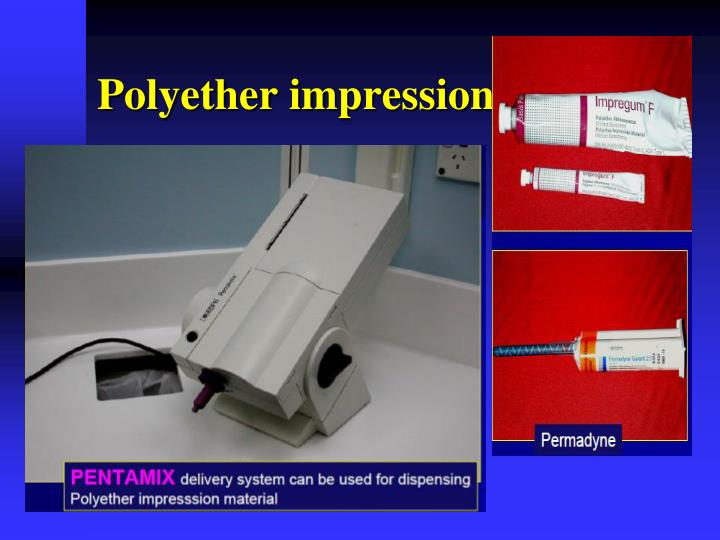

Materials that warrant particular awareness include latex, nickel, methacrylate, eugenol and polyether impression materials. Characteristics of Impression Materials Comparing the attributes of materials is helpful when choosing one for. Nevertheless, the dental team should remain vigilant and acutely aware of the potential of the many available dental materials and products to cause allergic hypersensitivity within the mild to severe range, both intra-orally and at unrelated parts of the body. The new 3M ESPE (Soft) Monophase Material displaces moisture right from the first contact with tissue for void-free impressions. However, currently there is not enough evidence to indicate that use of popular dental materials should be discontinued. Development Polyether impression material was developed in the late 1960s for use a s a dental impression material. Research demonstrates that there are numerous potential allergens in everyday dental practice. Four types of elastomeric impression materials are available for crowns and fixed partial denture impres- sions : addition silicone, condensation silicone. When an allergy test to a certain dental material is found to be positive, the dental team should take appropriate precautions to eliminate the use of the offending allergen by using alternative materials, for example, latex-free gloves or nickel-free alloys. Polyether Impression Materials (3M ESPE) Virtual (Ivoclar Vivadent) Honigum and MixStar (Zenith/DMG) THE DENTAL ADVISOR Recommends: Addition Silicones Flexitime, Genie, Honigum, Virtual, Polyether Impregum Costs are listed for comparison only and are not used to calculate ratings. Polyether impression material uses include impression-taking for creating dental restorations. Dispensing techniques can be hand mix, syringe or machine. Hydrophilic to provide accurate impressions in moist conditions, polyether impression materials come in various viscosities from lightweight/soft to heavyweight and have varying set times. The impression material is liquid or semi-solid when first. It is made by placing an appropriate material in a dental impression tray which is designed to roughly fit over the dental arches. Suspected allergies in dentistry should be confirmed by an allergy test conducted by a dermatologist or allergist, due to the potential for a life threatening allergic reaction or the development of a long-term occupational disability. Polyether impression materials are used for taking impressions when producing dental restorations. A dental impression is a negative imprint of hard and soft tissues in the mouth from which a positive reproduction, such as a cast or model, can be formed.


 0 kommentar(er)
0 kommentar(er)
